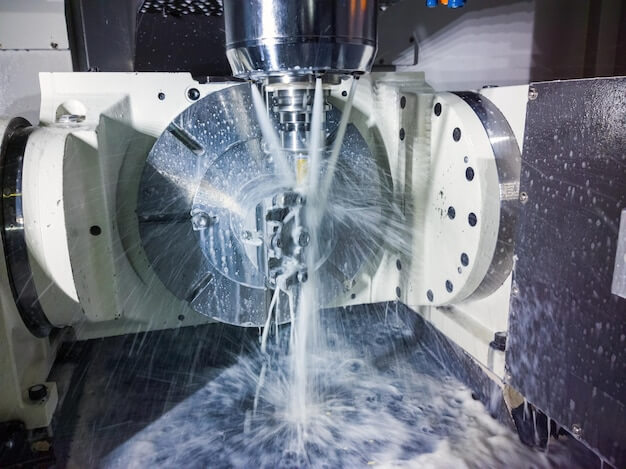Computer Numeric Control (CNC) machining is a manufacturing process that has revolutionized the industrial sector, introducing precision and control in ways never before possible. CNC turning is one element of this broad field deserving particular attention due to its wide application range, including the production of unique fasteners such as rivets.
Rivets are small metal pins commonly employed to hold two or more pieces of material together. They come in various types based on their intended use, structure, or assembly method. This article will explore how CNC turning contributes to creating different types of rivets.
CNC turning is a subtype of CNC machining that employs computer-controlled rotating tools to cut away material from a workpiece. It optimizes speed, accuracy, and repeatability – all vital aspects for producing high-quality rivets efficiently.
When it comes to the innovative production of various types of rivets, CNC turning is especially beneficial for several reasons. First, complex geometries inherent to certain rivet designs can be easily produced with CNC turning. Second, the precision offered by this technology permits the consistent manufacture of identical components crucial when generating large quantities of rivets.
Now, let’s delve into how CNC turning aids in the fabrication of some common types of rivets:
1. Solid Rivets: These are among the oldest and most reliable types of rivets. The traditional fashioning method involves heating and hammering to deform the shaft and create a ‘shop head.’ However, using CNC turning machines allows factories to produce these solid rivets without having to resort to manual labor, thus increasing efficiency and reducing errors.
2. Blind Rivets: Known also as ‘pop’ rivets, they feature a mandrel through their center. The mandrel ensures easy installation even when access to only one side of the materials being joined is viable. CNC turning plays an essential role in creating blind rivets by carefully carving the mandrel’s shape and aiding in maintaining uniformity across numerous pieces.
3. Semi Tubular Rivets: As their name suggests, these rivets possess a partial hole extending up the end opposite to the head of the rivet. This design facilitates easier deformation than solid rivets while maintaining similar strength characteristics. CNC turning machines flourish when crafting semi-tubular rivets because precision is critical during manufacturing to guarantee that the resulting hole aligns correctly under pressure.
4. Shoulder Rivets: These are unique types of fasteners with a ‘shoulder’ or ‘neck’ between the head and the body of the rivet. They allow adjoining parts to rotate around the shoulder, serving as moving joints in applications like tools and machinery. The accurate shaping of shoulder rivets using conventional methods can be challenging, making CNC turning an ideal solution for consistent production.
5. Drive Rivets: Characterized by a small dome, drive rivets are hammered into place for installation. Their minimalistic simplicity does not compromise utility, frequently appearing in automotive manufacturing. Even though they seem simple, ensuring consistency across batches is crucial – a controlled process achievable with automated CNC turning.
This comprehensive exploration reveals how CNC turning plays a pivotal role in creating various kinds of efficient, high-quality rivets. Beyond producing repeatable results, cost-effectiveness, and versatility, this technology opens up possibilities for innovative rivet designs. Offering greater precision scaling from intricate jewel-like pins to robust structural supports, it seems CNC turned rivets are only set to become more prevalent in future industries.
Other Articles You Might Enjoy
- CNC Turning: A Deep Dive into Rivet Production(cnc laser cutting Adolph)
Introduction:Computer numerical control (CNC) represents one of the most crucial inventions in manufacturing technology. It pertains to a method used to control an array of complex machinery using computer programs…
- CNC Machining for Custom Art Installations: Precision and Creativity Combined
Introduction: An Overview of CNC Machining and Custom Art Installations CNC machining, or Computer Numerical Control machining is a modern manufacturing process where pre-programmed computer software dictates the movement of…
- Ceramics in CNC Machining: A Viable Alternative to Traditional Metals?
CNC Machining and Its Importance in Manufacturing Computer Numerical Control (CNC) machining stands as a critical pillar within the sphere of manufacturing, lauded for its accurate and fast production capabilities.…









